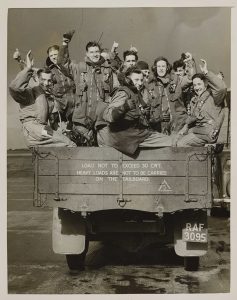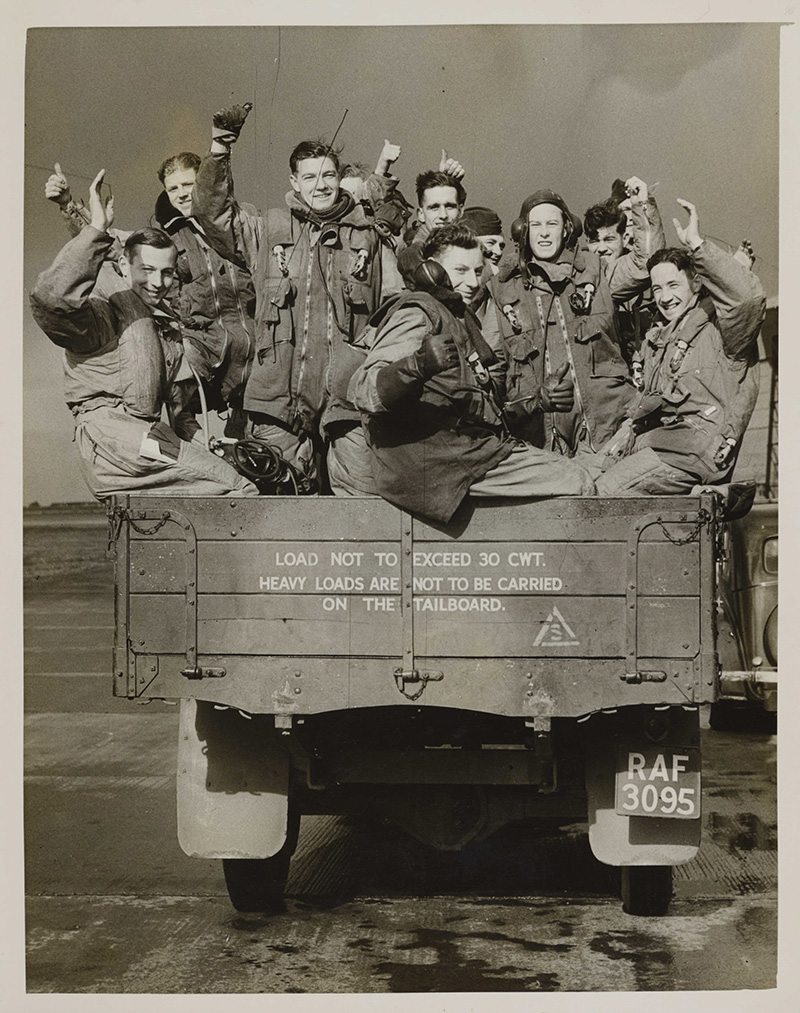Our support team get asked all kinds of different questions relating to ancestors’ service in the wars. One of the most significant recent questions has been how to find out the names and details of other crew members on aircraft that customers’ ancestors served with.
RAF aircrews were chosen by the paired pilot and navigator. The men were quite literally put into a room to organise themselves. Crews quickly became fast friends, serving in close proximity in a high stress environment. Should the worst happen they would be buried together, and Ken Dodwell said in his account that he never forgot his Lancaster crew for the rest of his life. It is hardly surprising, then, that genealogists are interested in the comrades that their ancestors served with.
Our Customer Support team manager forwarded us a request regarding a Sergeant John Lowry, who was an air gunner on a Boulton-Paul Defiant in the early years of the war. Lowry and his pilot were declared dead in 1942 after their aircraft disappeared over the North Sea. Lowry’s descendant contacted us in order to find the details of the pilot and anything we could discover about his service.
We were well prepared to help with the query, thanks to the Bomber and Fighter Command Losses records that we have available on Forces War Records.
They revealed Sergeant Lowry’s pilot to be Kenneth Drinkwater, and of course gave the details of the plane’s disappearance over the North Sea. In order to obtain any further information the descendent would have to put in a request with the Ministry of Defence using the general enquirer’s form, or seek the permission of Kenneth Drinkwater’s next of kin before applying with the provided next of kin form. Without doubt, the ‘Bomber and Fighter Command Losses 1939-1945’ collection is a fantastic resource if you are looking for other crewmembers of an aircraft that was shot down or otherwise lost on operations.

However, what if the crew weren’t killed? Where else can you look? Currently, the only place you can find other information is from the National Archives, in the collection given the reference number AIR 27, which is ‘Air Ministry and successors:
Operational Records Books, Squadrons’. Books in this reference series provide a daily record of the events in an RAF Squadron from 1911-1984, and can include information such as: name and rank of flight crew, aircraft type and serial number, number of passengers (if applicable), flight or sortie details and weather conditions.
AIR 27 can be viewed by visiting the National Archives, but part of the collection has already been digitised by the Archives and provided online; it is available to access here: http://discovery.nationalarchives.gov.uk/details/r/C2082.
Enter the Squadron Number and a date range, for example “617, 1940-1945”, and you will be presented with every currently digitised record book. These are not displayed in any particular order, but each book relates to one month of action, which will be specified. A £3.30 fee is required to download each record book, so it will be expensive if you wish to track a squadron through the entirety of the World War.
Some Dominion and Allied air force squadron books are available in this collection, provided the squadron fell under British Command, such as No. 71 Squadron RAF, one of the Eagle Squadrons formed from US volunteers.
If you are lucky, or should I say honoured, enough to have an ancestor in a famed squadron, such as No. 617 Squadron RAF, also known as the Dambusters, then you may be able to find crew lists on free sites such as Wikipedia as well. We would always advocate cross-referencing this information with an Operations Record Book, or similar resource, as sites such as Wikipedia may be publically editable and thus not always totally reliable.


